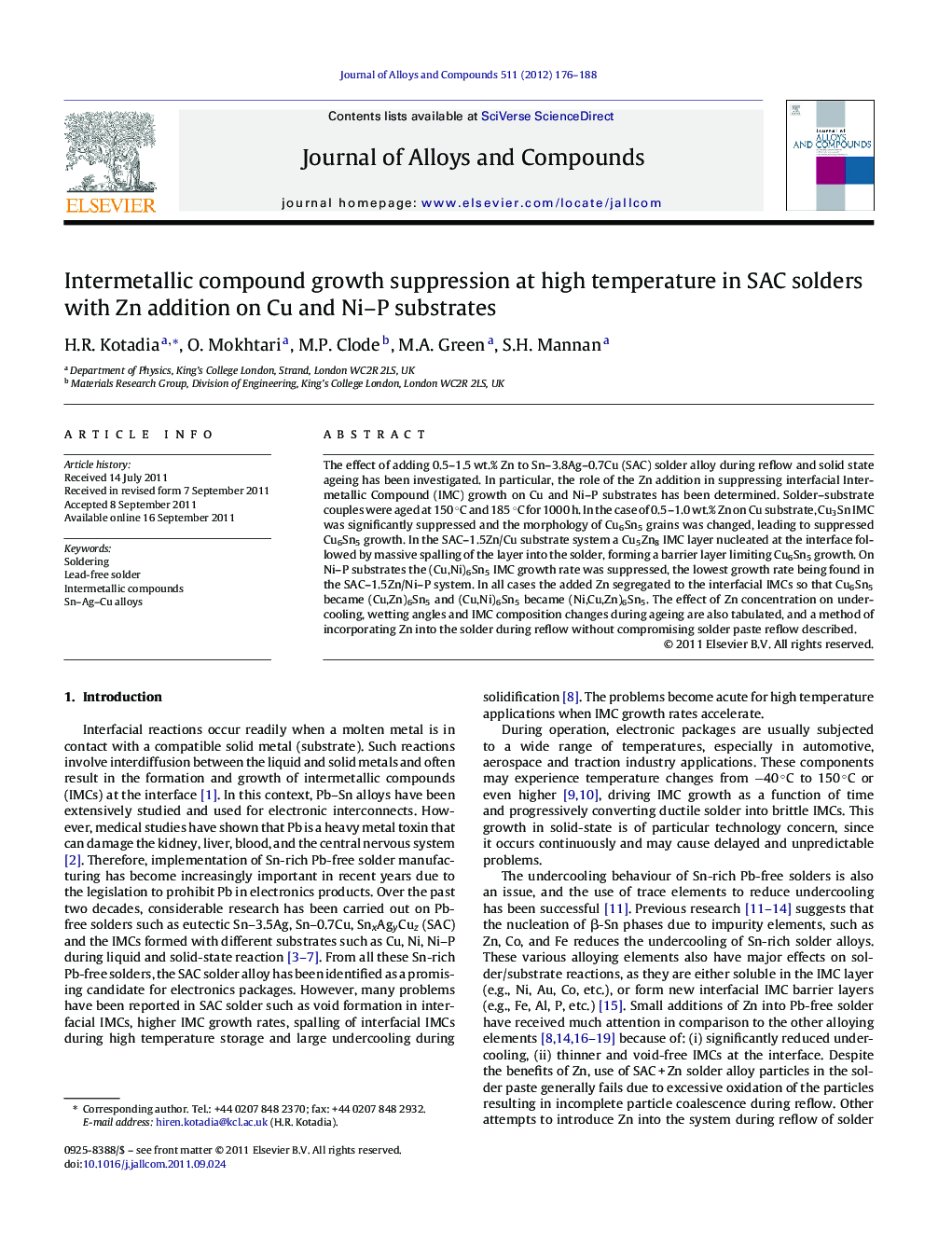| Article ID | Journal | Published Year | Pages | File Type |
|---|---|---|---|---|
| 1616630 | Journal of Alloys and Compounds | 2012 | 13 Pages |
The effect of adding 0.5–1.5 wt.% Zn to Sn–3.8Ag–0.7Cu (SAC) solder alloy during reflow and solid state ageing has been investigated. In particular, the role of the Zn addition in suppressing interfacial Intermetallic Compound (IMC) growth on Cu and Ni–P substrates has been determined. Solder–substrate couples were aged at 150 °C and 185 °C for 1000 h. In the case of 0.5–1.0 wt.% Zn on Cu substrate, Cu3Sn IMC was significantly suppressed and the morphology of Cu6Sn5 grains was changed, leading to suppressed Cu6Sn5 growth. In the SAC–1.5Zn/Cu substrate system a Cu5Zn8 IMC layer nucleated at the interface followed by massive spalling of the layer into the solder, forming a barrier layer limiting Cu6Sn5 growth. On Ni–P substrates the (Cu,Ni)6Sn5 IMC growth rate was suppressed, the lowest growth rate being found in the SAC–1.5Zn/Ni–P system. In all cases the added Zn segregated to the interfacial IMCs so that Cu6Sn5 became (Cu,Zn)6Sn5 and (Cu,Ni)6Sn5 became (Ni,Cu,Zn)6Sn5. The effect of Zn concentration on undercooling, wetting angles and IMC composition changes during ageing are also tabulated, and a method of incorporating Zn into the solder during reflow without compromising solder paste reflow described.
► Systematic investigation on the Sn–3.8Ag–0.7Cu (SAC) solder alloy with Zn addition on Cu and Ni–P (ENIG) substrates. ► Intermetallic compounds (IMCs) growth changed by Zn addition and formation of various interfacial IMCs and particles in the solder matrix. ► High temperature reliability test carried out at 150 °C and 185 °C. ► Solder alloy behaviour explained as regards cooling, wetting angle, and IMC composition with respect to the Zn concentration in the solder. ► Solder paste prepared with 1–5 μm sized Zn particles and explanation of the behaviour.
